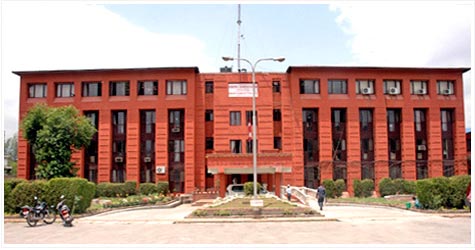First bird flu death reported in Nepal
Kathmandu, May 2
A 21-year-old patient infected with Influenza A virus subtype H5N1, popularly known as bird flu, has died in Kathmandu, becoming the first case of bird flu death in Nepal.
The Ministry of Health and Population organised a press conference today to inform the public about the first case of bird flu death. Government officials said the identity of the victim was being withheld mainly to avoid creating panic among the public. They added there was no need to panic, as it was a month-old case and chances of the virus spreading were remote.
Pushpa Chaudhary, secretary at the Ministry of Health and Population, told mediapersons today that the ministry had sent the victim’s throat swab to WHO Collaborating Centre for Influenza in Japan which confirmed bird flu.
The youth was admitted to a hospital on March 24 with symptoms of fever and cough and died on March 29. The government received a report from Japan only on April 30 that confirmed bird flu. Chaudhary said the government had taken all measures to prevent the virus from spreading to other members of the victim’s family and the public.
According to Chaudhary, doctors suspected that the victim was infected with H5N1 influenza virus and sent his throat swab to National Public Health Laboratory, Teku.
“National Public Health Laboratory could not identify the type of influenza, so we sent the sample to WHO Collaborating Centre for Influenza’ in Japan,” said Secretary Chaudhary.
She said the ministry started comprehensive epidemiological investigation and risk management in coordination with the Ministry of Agriculture and Livestock Development, WHO South East Asia Regional Office and WHO country office. According to World Health Organisation, H5N1 is a type of influenza virus that causes a highly infectious, severe respiratory disease in birds.
Humans are rarely infected with influenza A (H5N1). When people to people infection is caused due to mutation of the virus, which is a rare occurrence, then there is 60 per cent chance of mortality, said Bibek Kumar Lal, executive director at Epidemiology and Diseases Control Division.
“On examining the symptoms, we prescribed Oseltamivir, but unfortunately we could not save him,” Lal said.
According to Chaudhary, infection of bird flu from birds to humans is rare and from human to human even rarer. Since 2004, 860 people have died of bird flu around the world.
Lal said government officials called the victim’s family immediately after they received the report from Japan and the family informed them about the victim’s death.
The disease was reported in Nepal in March.
Banshi Sharma, director general of Department of Livestock Services, said bird flu was reported recently in Tarkeswor Municipality, Hetauda, Morang and Sarlahi districts.
“We have already culled 100,000 poultry and are still collecting samples of poultry. There is no risk of bird flu in poultry farms,” he said.
Cases of H5N1 infection in humans are found to have been caused by close contact with infected live or dead birds or A(H5N1)-contaminated environment.
Doctors say well-cooked food, particularly the food cooked at 70 degrees Celsius, is devoid of deadly virus. They add that washing hands with soap after touching chickens, maintaining personal hygiene and sanitation and staying away from dead birds and poultry can minimise the risk of bird flu infection.
Symptoms
- High fever and malaise, cough, sore throat, and muscle ache
- Abdominal pain, chest pain and diarrhoea
- Infection progresses quickly to severe respiratory illness, pneumonia and neurological changes






